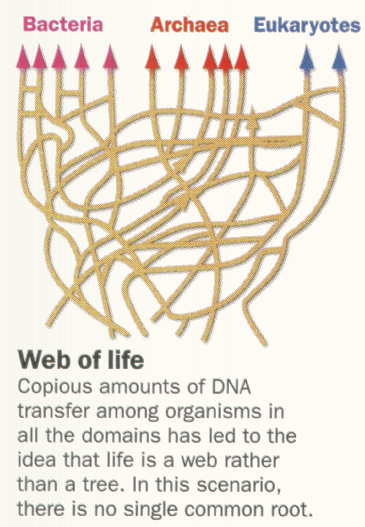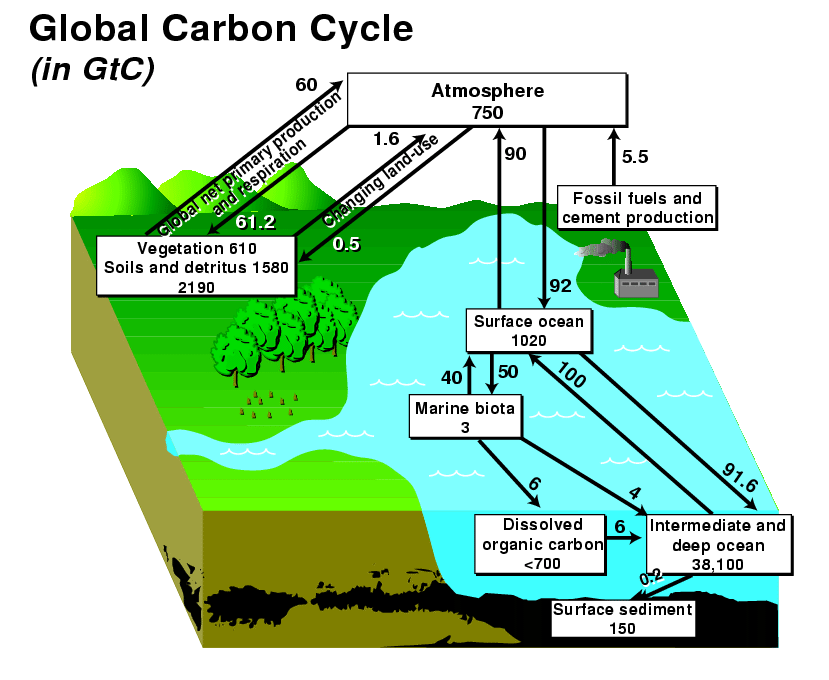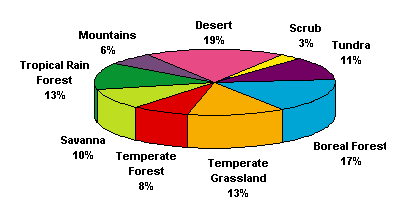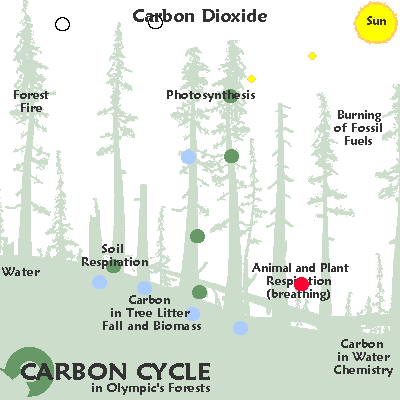 The
Biosphere
The
BiosphereBiosphere
“it is interesting to contemplate a tangled bank.”
Charles Darwin, On the Origin of Species (1859)
Vaclav Smil, The Earth's Biosphere: Chapter 8
These are the coequal sustaining partners of the biosphere: especially bacteria.
Life as an assemblage | Energy Flows through the Biosphere | Symbioses | biological diversity
The Biosphere’s dynamics & organization:
Fundamental rules and grand patterns of life on Earth
Biomes, Symbiosis and Complexity
The atmospheric reservoir for carbon was 600 Gt or giga-tons, at a dilution of 280 ppm of carbon dioxide in the air.
pre agricultural vegetative cover stored 1,100 Gt
pre agricultural soils stored 1,500 Gt (then maybe >2,000 Gt C)
pp. 131-132.
Grand patterns of regularity in the assemblage of life are referred to as plant associations and they are fundamental parts of a biocenose, or biotic community.
p. 199.
“Even casual observations reveal that the astonishing diversity of species is organized in a limited number of basic patterns ranging from the small scale plant communities to continent spanning biomes, assemblages of life whose structure and function is largely determined by climate.”
An organism’s BMR, basal metabolism rate:
![]()
“As an organism’s area goes up as the square and its mass (volume) as the cube, of its length, and so the body surface surface available for heat dissipation, and hence BMR , could be expected to go up as the .667 power of its mass. But this is not the case...”
area = L2 ........... means squared
mass = L3 .............. means cubed

Kleiber’s 3/4 three quarter law
“the three quarters law appears to apply to prokaryotes as well as to whales.”
three quarters of a whole is the same as 3/4 or 75 percent (%) or .75
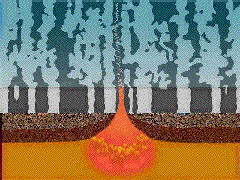 p. 201
p. 201
“The search for order across the huge size diversity on the organismic level takes the general form of :
y = a x b
-
where y is an attribute of the organism
-
where a is a specific constant
-
where X is the variable of size or mass
Energy flows envisioned in a new way.
"Three conclusions follow:
- distribution networks must be able to deliver these (energy and material) flows to every part of the organism and all organisms in the ecosystem
- their terminal branches must have identical size, as they have to reach individual cells
- the delivery process must be optimized to minimize the total resistance and hence the overall energy needed for distribution."
p. 204
Body mass is proportional to power output by the "quarter power law"
"Every complex organism combines invariant components (molecules, cells, capillaries) that are connected to optimally scaled structures that provide support, a metabolic framework, and neural links and that display the unmistakable self similarity of hierarchically scaled fractal systems.'
Thus "scaling of populations helps to uncover the limits to density and the frequency distribution of abundance."
There are exceptions to the "quarter-power scaling rule:"
"By far the most notable case of this mismatch involves the relationship between body mass and the average population density."
p. 205
"Consequently,....natural population densities are not simply a function of the energy needs of individuals."
p. 207
Energy Flows through the Biosphere
Lindeman's, Odum's, and Teal's trophic transformation studies were each a refinement of the 10% rule of efficiency in transfer from one food level in a web to another. Trophic transformation refers to the study of metabolism by organisms at each level of an ecological system from producers to levels of consumers, who all depend on heat, sunlight, bacteria, and recycling of nutrients.
| Light source & consumers |
Minnesota Lake |
Silver Springs |
Sea Island's Marsh |
| incoming energy |
.4% |
||
|
primary |
8.7% |
16.0% |
40% |
|
secondary |
5.5% |
4.5% |
27% |
|
tertiary |
13.0% |
9.0% |
2% |
"the share of radiation reaching the Earth's surface that is used in converting carbon in carbon dioxide to new (plant) phytomass, is at best 4% when calculated for the PAR." (photosynthetically available radiation?)
p. 207-208
"the idea of untrammeled competition as the driving force in the evolution of the biosphere... Competitions' powerful effects are are easily demonstrated by myriad of examples, but the consequences of cooperation and sharing have been even more profound."
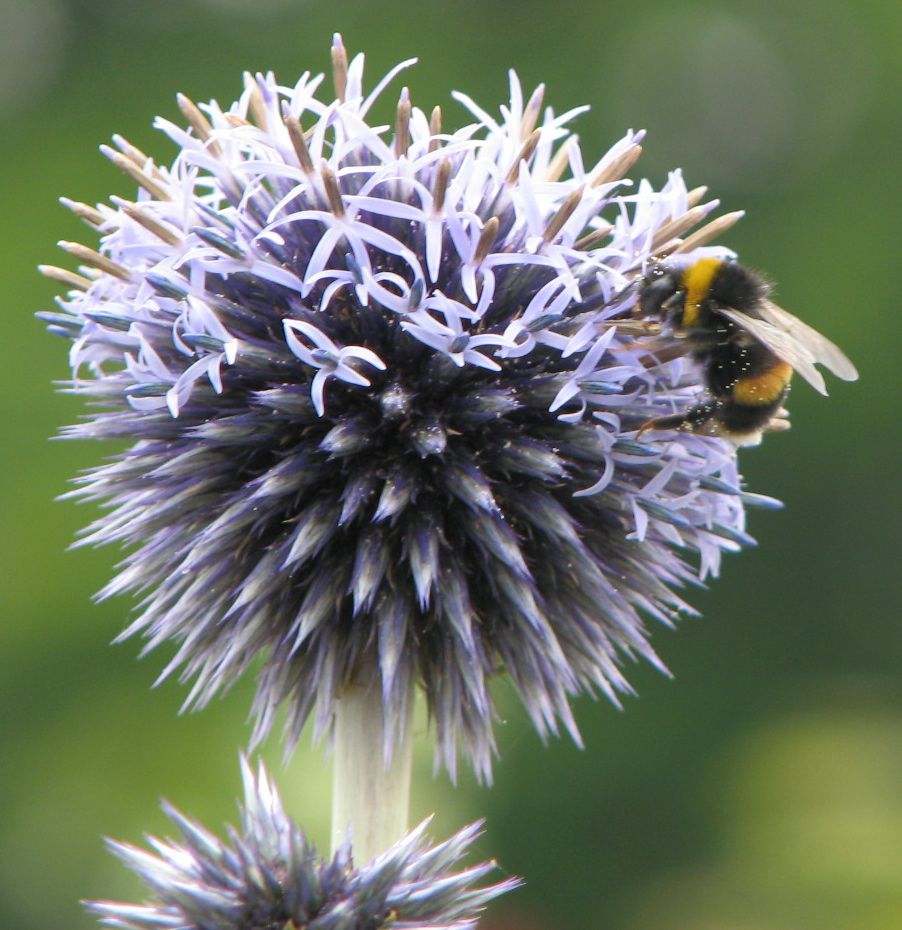 A bee in Darwin's garden at Down House.
A bee in Darwin's garden at Down House.
"reciprocal evolutionary changes as two populations are engaged in a race to avoid extinction ...named this coevolution (1964), and studies of plants and the organisms that attack them offer many excellent examples of this ubiquitous process."
Perhaps the two most important symbiotic relationships on the organismic level are the sharing of resources between Rhizobium bacteria and their leguminous plant hosts and between plants and fungi attached to their roots.
p. 220.
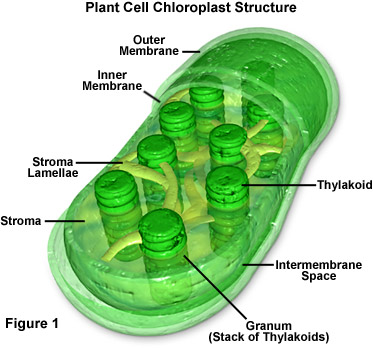 Mutualism in the biosphere goes far beyond the myriad
of ongoing interspecific actions, as ancient symbioses appear to be responsible
for the very evolution of eukaryotic life. Mitochondria and chloroplasts (shown to the left),
two key organelles in eukaryotic cells, have their origins in a symbiotic
association with bacteria.
Mutualism in the biosphere goes far beyond the myriad
of ongoing interspecific actions, as ancient symbioses appear to be responsible
for the very evolution of eukaryotic life. Mitochondria and chloroplasts (shown to the left),
two key organelles in eukaryotic cells, have their origins in a symbiotic
association with bacteria.
p. 220
Mycorrhizae are very common, and they harvest nutrients as an example of sustaining mutualisms of plants and fungi, with some 90% of all plant species and every conifer, being symbiotic with at least one or more kinds of fungi.
p. 221
Diversity, Productivity and Stability
Hypotheses
p. 225
"A greater variety of species in an ecosystem makes it more resilient, buffering it against environmental disruptions."
finding conclusive proofs has not been easy
"stability is so ambiguous as to be useless"
p. 226
"constancy," resilience, or persistence, or resistance (staying the same despite disturbance) are preferred.
"existing evidence are inconclusive" in showing causal links between variety and'
Life as an assemblage | Energy Flows through the Biosphere | Symbioses | biological diversity
The biodynamics of ecological communities that make up the biosphere is the driver of natural conditions to which all animals, plants, bacteria and fungi all contribute and to which we must all adapt to coexist together.
The Earth harbors living beings because of the conditions that life over billion of years has affected and to which each generation adapts to these dynamic –or changing– circumstances.
Neither life nor the geological shifts taking place on the planet's surface have the last say because both the geological evidence and the fossil life of the Earth have each contributed to the conditions we exist in, adapt to and alter as we develop as a species.


